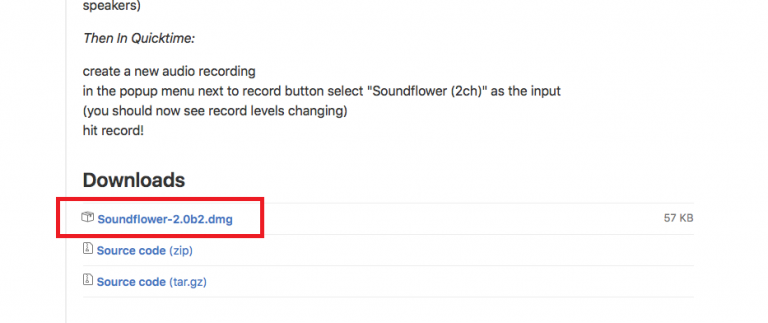
- SOUNDFLOWER FOR MAC NOT INSTALLING HOW TO
- SOUNDFLOWER FOR MAC NOT INSTALLING INSTALL
- SOUNDFLOWER FOR MAC NOT INSTALLING PRO
SOUNDFLOWER FOR MAC NOT INSTALLING PRO
In Pro Tools > Setup > I/O > Input, rename the inputs if necessary to make them easier to find when selecting inputs on an Audio or Aux Track.In Pro Tools, set the Playback Engine to the Aggregate Device you made.


This forces the System audio to Soundflower
SOUNDFLOWER FOR MAC NOT INSTALLING INSTALL
pkgutil -flatten HOME/Desktop/Soundflower HOME/Desktop/Soundflower.pkg You can now open this package with the Installer application to install the Soundflower kernel extension. You have to press and hold the control key on your keyboard, then click on the pkg file, you will get the context menu. This will create the corrected Soundflower.pkg package on your Desktop. Just follow our quick guide to setting up your project. Install Soundflower on Mac for the first time Do NOT double click the pkg installer. Support for 2ch and 64ch virtual audio devices.Using Dehumaniser in Pro Tools is easy.Re-route audio from music player to audio editors without the need for external hardware.Simply share audio feeds from one app to another.Create a virtual audio device for re-routing of your audio channels.
SOUNDFLOWER FOR MAC NOT INSTALLING HOW TO
How To Soundflower For Mac CatalinaFeatures and Highlights NOTE: Screenflick Loopback is now the preferred way. In 2014, Cycling '74 passed stewardship of Soundflower to Rogue Amoeba. The Soundflower extension for macOS must be installed to record the system audio playing on your Mac. Initial development and maintenance of Soundflower was done by Cycling '74. Audio format for each detected device can also be changed with a simple dropdown menu selector. Each of the audio channels can have its own volume level, specific dB change, or it can be fully muted. At the bottom of the drop-down menu, you can also access Audio Setup window that will showcase a standalone window with configuration tabs for your physical audio components (Built-in Microphone, Built-in-Input, Built-in Output) and Sound flower Soundflower For Mac Sierra’s emulated audio devices (2ch and 64ch). For each device you can set their buffer sizes (64-2048), routing for each channel and set audio cloning properties. Is accessible directly from your status bar, with a dropdown window that holds numerous configuration settings for the emulated 2ch and 64ch devices.

You are required to hold the control key while installing, and after that, the fully signed app will be activated on your system. While the Soundflower for macOS comes in an extremely small package (smaller than 100kb), its installation requires just a little bit more involvement than with regular Mac apps since the installer is not signed. The entire process of emulating virtual audio devices can easily run even on older or weaker Mac configurations, ensuring that your other apps will run without any issues. By default, Soundflower creates a virtual 2-channel and 64-channel devices that can be4 used as default input or output devices in various applications. Like the OP, after installing, Soundflower appears as a sound device (well, 2) in the Sound control panel. If I am wrong about this, then everything below is irrelevant. As I understand it, that version incorporates Soundflowerbed, so I did not install it.

For example, you can send your music player Soundflower For Mac 10.5.8 audio feed to another app that expects to record audio from your microphone input. I downloaded and installed Soundflower 2.0b2. It comes in the form of the easy-to-use status bar app that you can use to configure audio settings and prepare audio feeds to be sent to specific devices and apps. It was designed to be a no-nonsense and straightforward, which makes it usable not only by seasoned audio professionals but also novices who just want to re-route audio signal from one app to another.


 0 kommentar(er)
0 kommentar(er)
